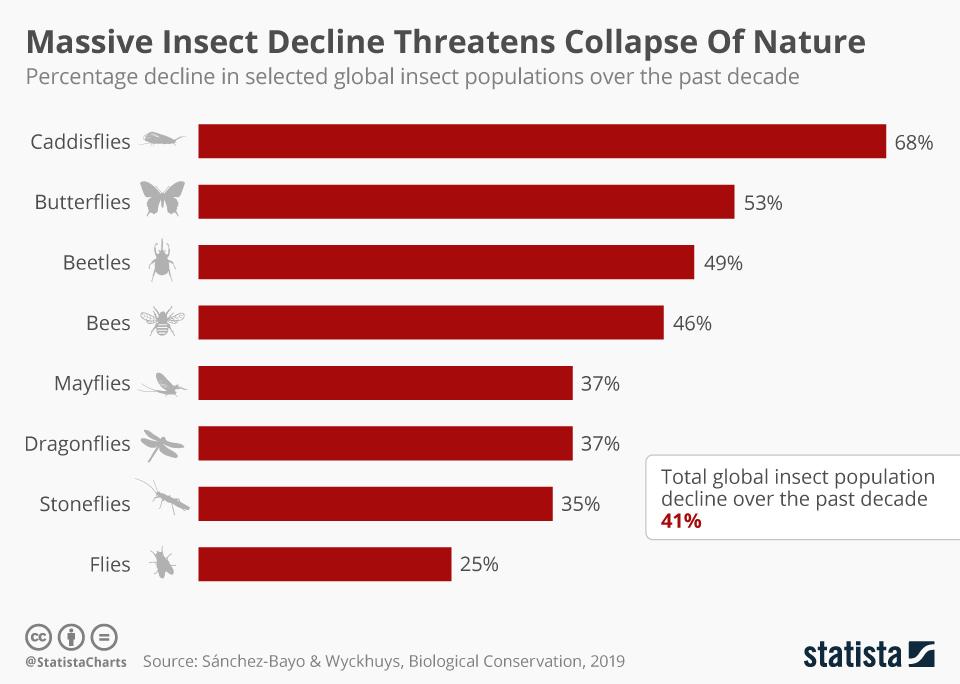Pollinators are any living or nonliving things that help with the pollination process, or the transportation of pollen grains from male plants to female plants. This article will help you learn about dragonflies and answer the question: are dragonflies pollinators?
Read more: What is Pollination?
Table of Contents
Importance of Dragonflies
Are Dragonflies Pollinators?
There are up to 7,000 species of dragonflies (Anisoptera) around the world, but none of them are pollinators. They are commonly found in riverbanks and fields with ponds or streams nearby. They are well known for their helicopter-like style of flying and can usually be found on top of flowers and water plants. Despite the fact that they are sometimes found on flowers, the answer to the question, “do dragonflies pollinate,” is no. Dragonflies do not pollinate, but they can act as great pest control for your garden.

Dragonflies are insectivores, which means they only eat other insects. As natural pest population controllers, dragonflies reduce the population sizes of disease-carrying insects like mosquitoes. Dragonflies usually land on plants and flowers to catch their prey, including:
- Mosquitoes
- Flies
- Damselflies
- Smaller dragonflies
Unfortunately, what makes dragonflies such great pest-control is the same thing that can harm pollinator populations. Dragonflies also affect pollination negatively by eating pollinators such as:
- Butterflies
- Bees
- Moths
If your garden is made of plants that are self-pollinating and don’t depend on pollinators to reproduce, then dragonflies will likely help keep pests at bay. However, if your garden is made of cross-pollinating plants that rely on pollinators to reproduce, it’s best not to attract dragonflies that might eat pollinators.

Source: mike weis/flickr
Natural Habitat
Dragonflies may be found on every continent except Antarctica. This is due to the fact that dragonflies prefer warmer temperatures with bodies of freshwater, which is essential for their reproduction. Dragonflies are commonly seen in places such as:
- Riverbanks
- Ponds
- Streams
- Bogs
- Marshes
Because dragonflies need stable oxygen levels and clean water in order to thrive, they can serve as an indicator of a healthy ecosystem. This means that an ecosystem is clean and thriving when dragonflies are present in the area.
Lifecycle
In tropical areas, dragonfly populations reproduce more frequently. In fact, 2-3 generations of dragonflies mate each year in tropical areas, while only one generation of dragonflies mates in temperate regions. This is due to the fact that their eggs hatch faster in warmer places, while in colder places, eggs typically won’t hatch until springtime.
During mating seasons, female dragonflies lay their eggs underwater. After a week, they hatch and become nymphs, or the larvae of dragonflies. Nymphs stay underwater and feed on aquatic insects, smaller fishes, and even other dragonfly nymphs.
Dragonflies spend most of their lives as nymphs, which takes several years. Before they mature into fully developed dragonflies, they molt their skin about 6 to 15 times.
Fully developed dragonflies only live for a few months. During this phase, they spend their time hunting other insects and looking for mates.

Population Decline
The population of dragonflies continues to decline. In December 2021, the International Union for Conservation of Nature (IUCN) conducted a global assessment, revealing that 16% of dragonflies and their close relatives, damselflies, are at risk of becoming extinct.

Source: Sanchez-Bayo & Wyckhuys, Biological Conservation
This population decline of dragonflies is driven by different man-made factors, such as:
- Destruction of wetlands and marshes: The size of existing marshes and wetlands continues to decline as humans extend their agricultural and urban activities.
- Water pollution: Because dragonflies rely on clean water to grow, ongoing contamination of the world’s freshwater threatens their existence.
- Widespread use of pesticides: Excess pesticides are washed into streams, damaging the area’s freshwater sources that are vital for dragonfly’s reproduction. Wind also transports pesticide chemicals that degrade air quality, which is also essential for dragonflies since they rely on a stable oxygen level.
Conservation Efforts
Organizations from different countries around the world are initiating programs to protect and conserve the dragonfly population.
Here’s an overview of some of the dragonfly conservation programs:
The Dragonfly Festival
The festival first took place in India in 2018. The main goal is to educate and enlighten the public about the important role of dragonflies in the environment. Since then, multiple field visits have been conducted by the collaborative efforts of different experts and organizations, including WWF India and Bombay Natural History Society (BNHS).
In 2020, the Indian Dragonfly Society (IDS), BNHS, and WWF India organized the festival virtually in collaboration with the United Nations Development Program (UNDP) and the International Union for Conservation of Nature (IUCN). The 2020 event focused on the importance of dragonfly conservation and trained volunteers to lead public awareness campaigns.
British Dragonfly Society
The British Dragonfly Society focuses on conducting multiple conservation projects for dragonflies. This includes:
- Dragonfly reintroduction projects in different regions
- Restoration of dragonfly habitats like peatlands
- Wetlands and nature reserves conservation projects
Biophilia Foundation
The foundation promotes the conservation and restoration of dragonfly habitats. With the collaborative efforts of their partners at Borderland Restoration Network (BRN), they have installed gabions, a type of retaining wall that supports and retains the water that serves as dragonfly’s habitat and breeding grounds. Together with their partners in Chesapeake Wildlife Heritage (CWH), they have been restoring farm fields back to their original wetland state. This expands the natural habitat of dragonflies in the region.
Read more about insects and pollination: Are Monarchs Pollinators?
